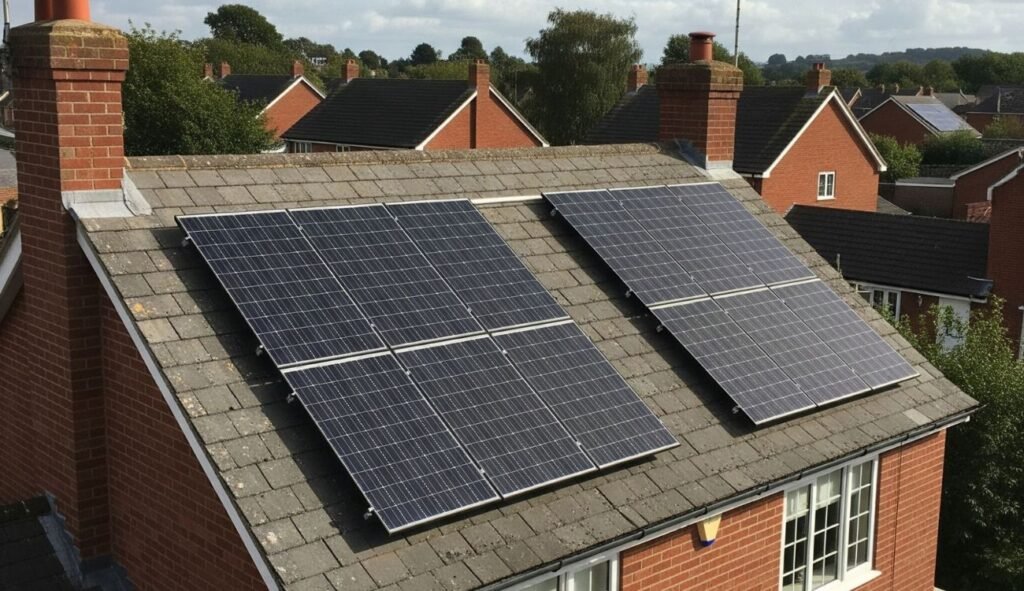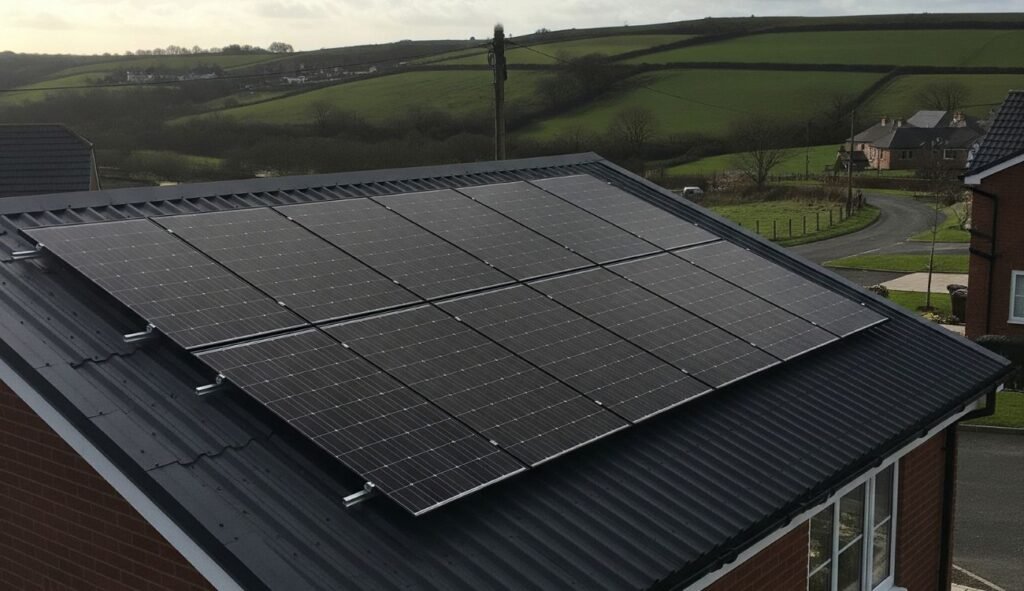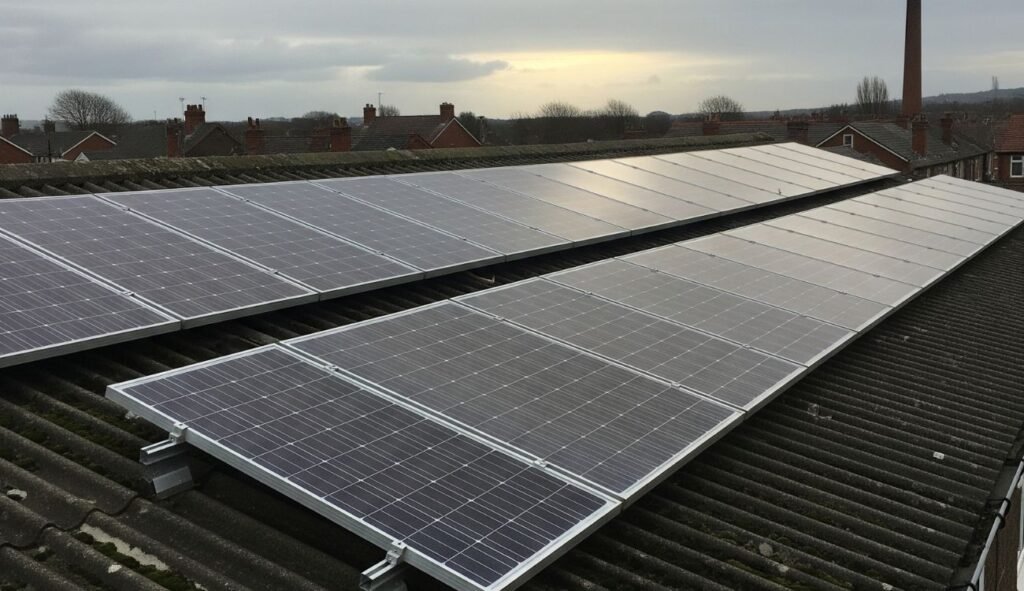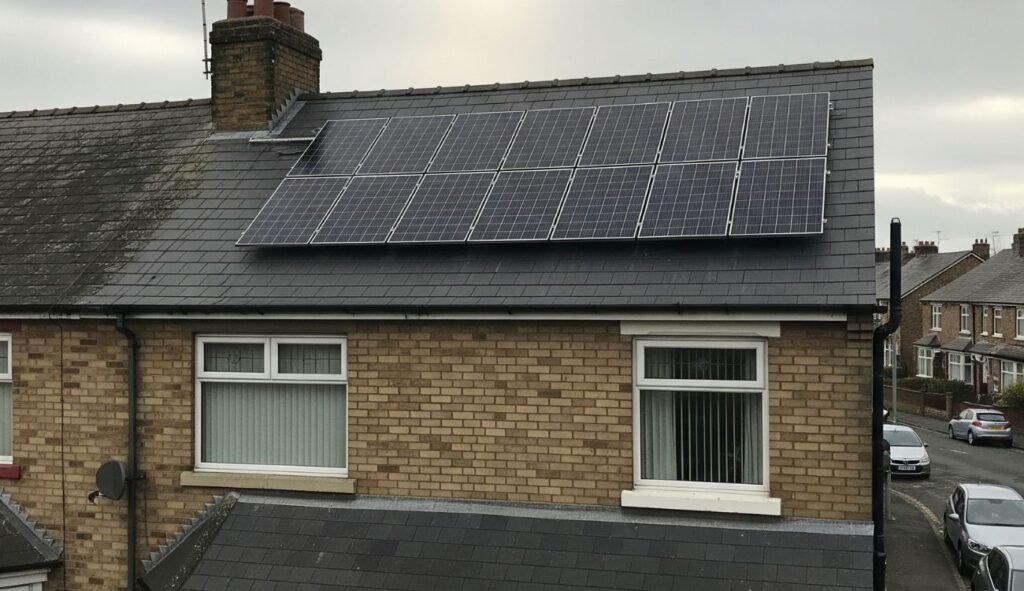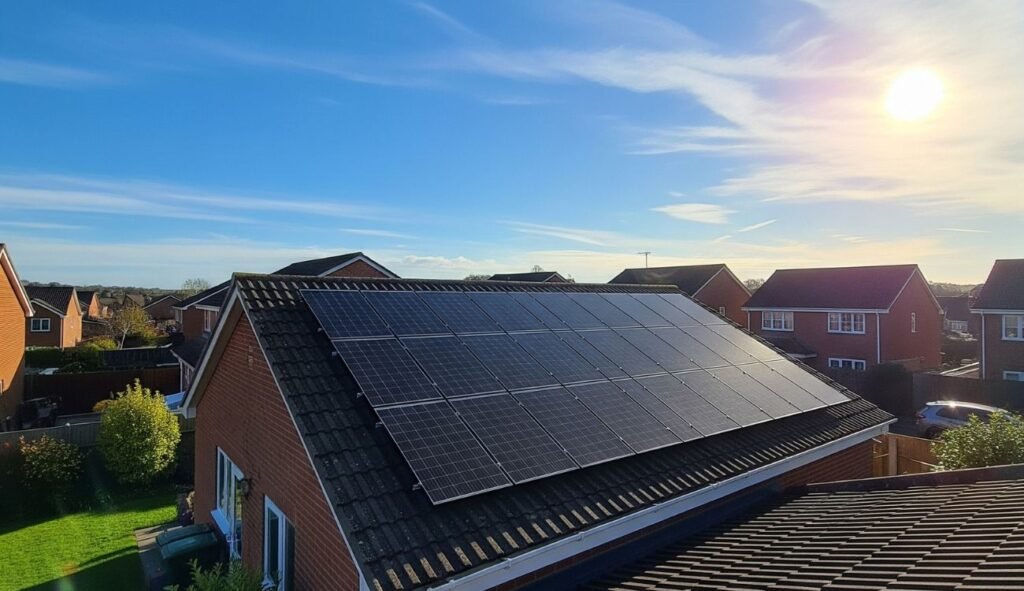Understanding if your roof is suitable for solar panels is a crucial step for homeowners, landlords, and commercial property owners looking to invest in solar energy in the UK.
Not all roofs are created equal when it comes to solar installation, factors like roof orientation, size, material, and shading all affect how effective your solar panels will be.
This guide will walk you through everything you need to know, including government incentives, planning permissions, and practical considerations, so you can make a well-informed decision about harnessing solar power for your property.
How Can I Determine if My Roof Is Suitable for Solar Panels?
Several factors influence whether your roof is ideal for solar panel installation:
Roof orientation and sunlight exposure
South-facing roofs are optimal because they receive the most sunlight throughout the day, resulting in higher solar energy generation.
East- and west-facing roofs can still support solar panels but with slightly reduced efficiency. North-facing roofs generally yield poor results in the UK climate.
If your property has a flat roof, you can still harness solar energy effectively by using specially designed mounting systems that optimise panel angle and exposure.
For more details, read our guide on installing solar panels on a flat roof.
Roof size and shape
The physical size of your roof directly impacts how many solar panels can fit. Typically, an average UK semi-detached home with a roof size of around 60–70 square meters can accommodate 12–16 panels.
| Property Type | Average Roof Size (m²) | Approximate Number of Solar Panels | Typical Output (kW) |
|---|---|---|---|
| Small terraced house | 40 – 50 | 8 – 12 | 2.0 – 3.0 kW |
| Semi-detached house | 60 – 70 | 12 – 16 | 3.0 – 4.5 kW |
| Detached house | 80 – 100 | 16 – 22 | 4.5 – 6.5 kW |
| Commercial flat roof | Varies (e.g. 150+) | 40+ (depending on space & layout) | 10+ kW |
Roof complexity (dormers, chimneys) can reduce usable space.
If you’re unsure how many panels your roof can accommodate or want expert advice on maximising your solar potential, Future Heat, serving Tyne and Wear, Newcastle, and the wider North East, can provide a tailored solar panel installation quote.
Our professional team will assess your roof’s size and shape, ensuring you get an efficient system perfectly suited to your property.
Roof condition and age
Your roof should be in good structural condition and ideally less than 20 years old. Solar panels last 25+ years, so installing them on a roof that needs replacing soon could be costly.
Roof material
Solar panels can be installed on most roof types including tiles, slates, and metal. For commercial properties with rubber roofs (EPDM or similar), specialist mounting systems are available to ensure secure installation without damaging the membrane.
Check out our detailed guide on installing solar panels on a rubber roof for more insights.
Shading
Trees, neighbouring buildings, or chimneys that shade your roof during peak sunlight hours will reduce your system’s efficiency.
Tools like Google’s Project Sunroof or professional site surveys can help assess shading impact.
Can Solar Panels Be Installed on All Roof Types?
Yes, solar panels can be installed on pitched tiled roofs, flat roofs, metal roofs, and rubber roofs, though the mounting system differs. Flat roofs often require angled mounting frames to optimise solar exposure.
Rubber roofs, common in commercial buildings, need non-penetrating ballasted mounting systems to protect the membrane.
What Planning Permission Do I Need for Solar Panels on My Roof?
Residential properties
In most cases, solar panel installations on domestic properties do not require planning permission if:
- The panels are installed on a roof that faces south, east, or west.
- The installation does not protrude more than 200mm from the roof surface.
- The panels do not exceed the height of the existing roof.
- The property is not a listed building or in a designated conservation area.
However, if your home falls under listed building status or is in a protected area, you will need to apply for planning permission from your local council.
Commercial properties
Commercial solar installations, especially larger scale projects, usually require planning permission, particularly if they involve roof alterations or are in sensitive zones.
It’s essential to consult with your local planning authority before proceeding. Check out our guide if you’re still wondering if commercial solar panels are worth it.
Are There UK Government Grants or Incentives Available for Solar Panels?
The UK government and regulatory bodies offer several schemes to make solar more affordable:
Smart Export Guarantee (SEG)
Since 2020, the Smart Export Guarantee (SEG) allows homeowners and businesses to sell excess electricity generated back to the grid, earning payments from energy suppliers. This creates an ongoing financial incentive to install solar panels.
ECO4 Scheme
The ECO4 Scheme provides financial assistance to qualifying low-income households across England, Scotland, and Wales, helping to reduce the cost of energy-saving improvements such as installing solar panels.
VAT Reduction
Solar panel installations on residential properties currently attract a reduced VAT rate of 0%, making the initial investment more affordable.
Local Authority and Regional Incentives
Some councils or devolved governments in Scotland, Wales, and Northern Ireland offer additional grants or loans. Check your local council’s website for tailored incentives.
How Much Can Solar Panels Reduce Your Electricity Bill?
Solar panels can significantly reduce your electricity bills by generating free, clean energy from the sun. According to the Energy Saving Trust, a typical 3.5 kWp solar PV system installed on a UK home can save up to £610 per year on electricity costs for homes without a battery.
These savings depend on factors such as the size of the system, roof orientation, and your household’s electricity usage patterns.
Installing solar panels allows you to use more of the energy you generate, reducing the amount you need to buy from your energy supplier.
Combining solar panels with a solar battery can further increase your savings by storing excess energy generated during the day for use in the evening or on cloudy days.
Solar batteries are definitely a worthwhile investment but knowing what size battery you will need is crucial in order to meet your energy needs.
For additional context on managing your energy consumption, see our guide on the average monthly electric bill with solar panels in the UK, which breaks down typical costs after installation.
Also, if you’re curious about the payback period, our article on how long before solar panels pay for themselves provides detailed insights on return on investment and savings timelines.
Frequently Asked Questions (FAQs)
Installing solar panels on listed buildings generally requires special permissions and must meet conservation guidelines to preserve historic character. Consult your local planning authority before proceeding.
Most solar panels have warranties for 25 years and often continue producing energy beyond this, though at slightly reduced efficiency.
Many home insurance providers include solar panels under existing policies, but it’s advisable to notify your insurer to ensure coverage and assess any premium changes.
Our Verdict
Assessing whether your roof is suitable for solar panels involves understanding your roof’s orientation, size, material, and shading conditions, alongside compliance with planning regulations.
UK homeowners, landlords, and commercial businesses can benefit from generous government incentives like the Smart Export Guarantee and VAT reductions, making solar installation more affordable and financially rewarding.
Myles Robinson is a seasoned expert in the boiler and home improvement industry, with over a decade of experience. He is deeply committed to environmental sustainability, actively promoting energy-efficient heating solutions to help households reduce their carbon footprint. By combining industry expertise with a dedication to environmental responsibility, Myles continues to lead efforts in transforming home heating practices towards a more sustainable future.


